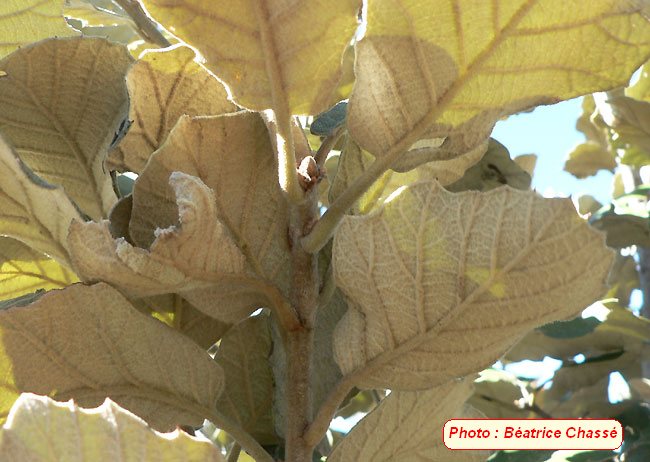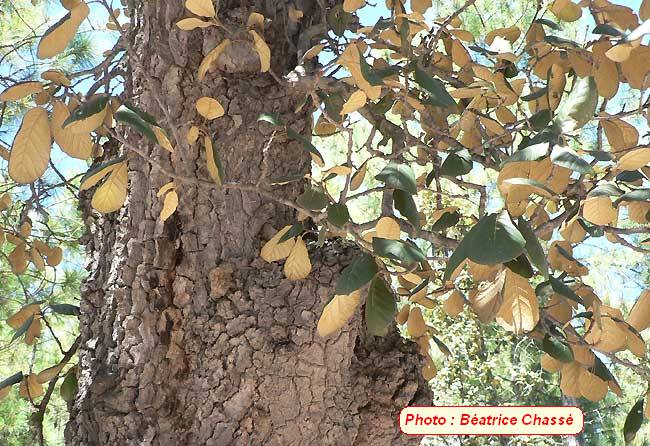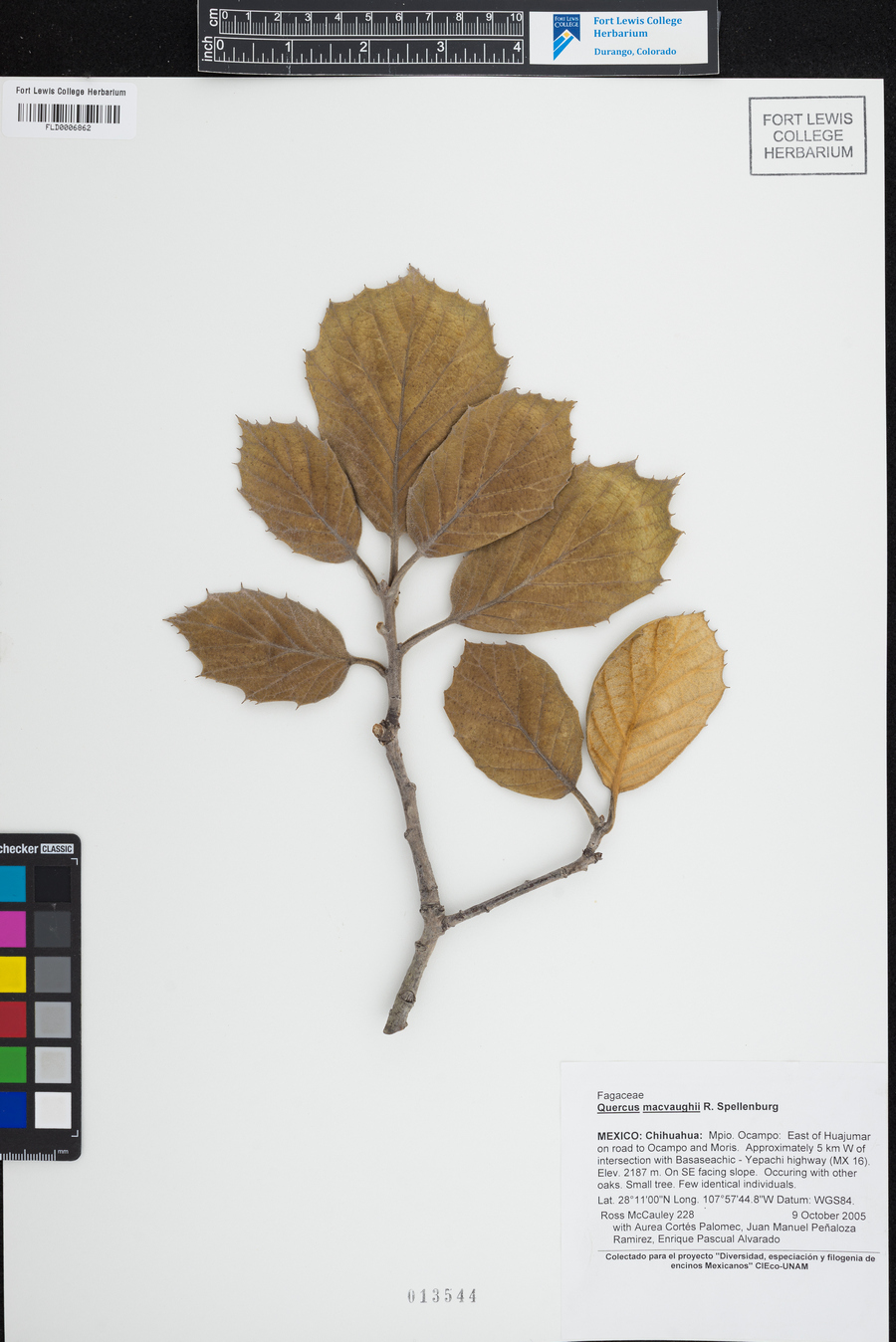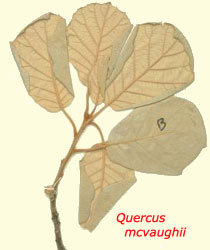| Quercus macvaughii | |
| Author | Spellenb. 1992 Amer. J. Bot. 79: 1200 |
| Synonyms | fulva
auct. not Liebm. |
| Local names | |
| Range | Mexico (Chihuahua, Durango, Sonora, San Luis Potosi) ; 1500-3100 m; |
| Growth habit | reaches
more than 20 m tall; |
| Leaves | 6-15 cm long, 4-10 wide; broadly oboval or rounded; leathery; thick; convex; apex obtuse or rounded, seldom acute or acuminate, bristle-tipped; base progressively attenuate, abruptly rounded or slightly cordate, sometimes truncate; margin thick, revolute, cartilaginous, with 3-7 pairs of small teeth, ending in 2 mm long bristle, seldom margin subentire; dark green, lustrous, nearly hairless above, except fascicled and glandular hairs along midrib; dense tomentum beneath, yellowish white, made of numerous 4-10 rayed, sinuous, tangled stipited fascicled trichomes (stalk to 0.05 mm , with a lot of white and yellow glandular hairs; 6-10 vein pairs slightly curved, strongly impressed adaxially; epidermis slightly bullate and papillose, invisible under tomentum; petiole 1-3.5 cm long, persistently tomentose; |
| Flowers | in April-May; male catkins 3-8 cm long, few-flowered; female ones bearing 1 or 2 flowers; |
| Fruits | acorn
1-2 cm long; subsessile or on a 0.5-1 cm long peduncle; singly or paired;
cup pubescent, margin not rolled under, 9-11 mm in diameter, 6-8 mm high,
enclosing 1/3 of nut; maturing in 2 years between July and September;
|
|
Bark, twigs and |
bark
dark grey, fissured; twig 3-8 mm thick, sulcate, with dense, purple, stellate
tomentum at first, then becoming golden, dwindling with years; small,
flat lenticels; bud 3-4 mm long, ovoid, hairy near apex; |
| Hardiness zone, habitat | probably hardy; |
| Miscellaneous | --
Sub-genus Quercus, section Lobatae, Series Erythromexicanae; -- Related to Q.crassifolia, -- Possible confusion with Q. crassifolia, Q. fulva and Q. conzattii; Q. crassifolia differs in having the stalk of abaxial fasciculate trichomes longer (0.2 mm); Q. conzattii differs in the annual maturation of acorn, the cupule peduncle longer (10-15 mm), and more acorns on the same peduncle (to 5 or more); Q. fulva has a cupule 13-18 mm in diameter with margin rolled inside, and the abaxial foliar trichomes with 10-25 rays, 0.4-0.7 mm long; |
| Subspecies and varieties |
|
| Pictures |
|




